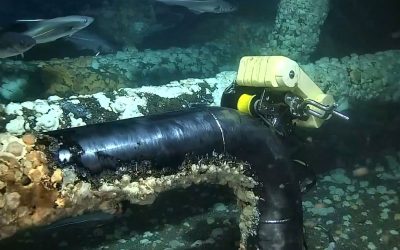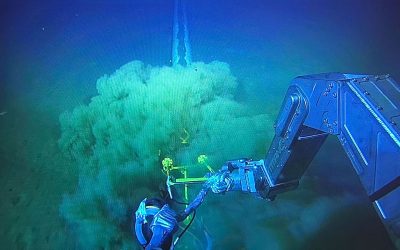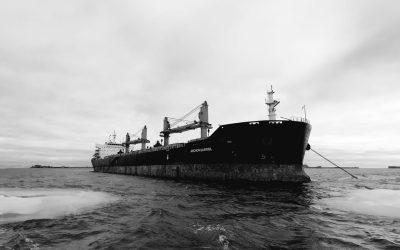A leading offshore operator in the South China Sea relies on a network of subsea pipelines and flowlines to transport oil and gas from wells to its production facilities. Over the years, these pipelines have been at risk of saltwater corrosion, mechanical stress, and fatigue. Left unchecked, small defects can develop into serious leaks or ruptures, threatening production schedules, increasing maintenance costs, and posing a risk to the environment. TSC Subsea was approached to perform a detailed integrity assessment at 15 locations across multiple subsea pipelines and flowlines, varying in diameter from 8 inches to 24 inches and wall thickness from 9.5 mm to 20 mm, at depths ranging from 25 m to 57 m.
The inspection scope comprised two critical tasks:
- Corrosion mapping, at locations highlighted by prior in-line inspection (ILI) data and other areas of concern.
- Weld integrity assessment, using a fully auditable, recordable advanced NDT method.
Further criteria included:
- Map, detect and measure corrosion on external and internal surfaces with millimetre accuracy.
- Identify and size planar weld anomalies, including cracks, lack of fusion or penetration, and pinpoint their exact depth and length.
- Be ROV-deployable, eliminating the risks and costs associated with diver-deployed inspections.
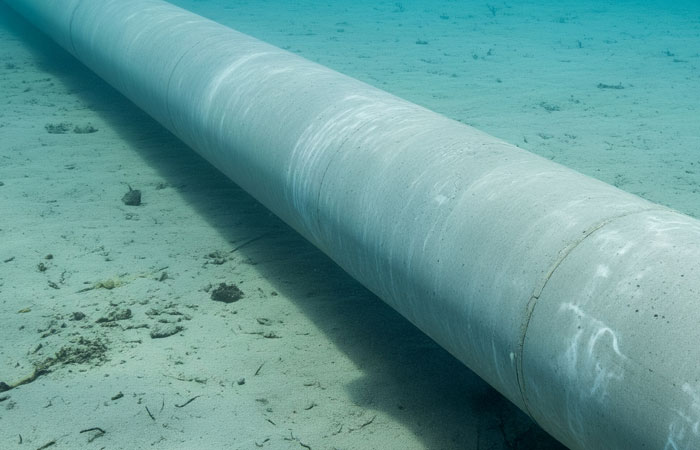
In this project, the pipelines were protected by a 32 mm to 60 mm thick concrete weight coat (CWC), with an additional 4 mm of polyethylene. Both protective layers were removed by another contractor, and the surface was then cleaned to a SA2.5 standard.
Advanced NDT Methods
TSC Subsea’s streamlined approach to pipeline and flowline inspection integrates Subsea Phased Array (SPA) for detailed corrosion mapping, and Time-of-Flight Diffraction (ToFD) for weld integrity assessment. Both SPA and ToFD use ultrasonic waves but serve different purposes:
- Subsea Phased Array (SPA) produces a volumetric and multiple-angle ultrasonic beam to build high-resolution data sets for the detection of surface and sub-surface defects. Perfectly suited for the detection of corrosion, erosion and general wall loss
- Time-of-Flight Diffraction (ToFD) deploys a pair of ultrasonic probes, one transmitter and one receiver, positioned on opposite sides of the weld. By measuring the diffraction of pulses from the tips of planar defects (e.g. cracks or lack-of-fusion), ToFD can pinpoint and size such flaws with sub-millimetre accuracy.
Both methods produce extensive, computerised, auditable datasets and require highly trained operators skilled in interpreting complex ultrasonic data.
Subsea Robotic vCompact
TSC Subsea has a wide range of ROV-deployable robotic systems, but for this challenge, the ideal solution was the vCompact, an ultrasonic scanner paired with a high-powered phased-array system. This configuration delivers full 360° circumferential drive in a compact, motorised, and encoded unit, with the added benefit of extending and retracting the probe arm, making it ideal for raster scanning.
Another advantage of the vCompact is its interchangeable magnetic body, which can be swapped out to suit diameters from 89 mm (3.5 in) to 3,000 mm (118 in). This multi-tech flexibility reduces overall inspection costs, increases efficiency and lowers personnel on board (POB), making the operation more sustainable.

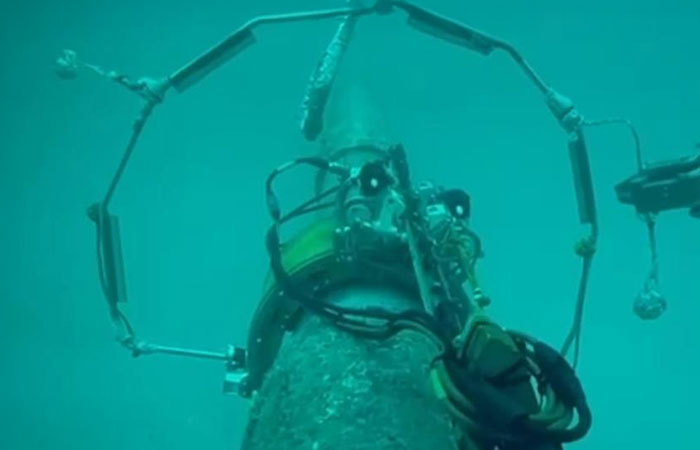
Phase 1: Preparation
A team of two NDT technicians and two robotic engineers mobilised in 12-hour shifts to maintain continuous operations. Before the inspection began, the team calibrated all equipment to ensure accuracy and data reliability.
Once complete, the ROV picked up the scanner with its manipulator arm, dived to the target location and placed the scanner on the pipe.
Phase 2: Subsea Phased Array (SPA): The vCompact’s motorised scanning arm first extends to its fully extended position of 550 mm with the 64-element probe elements aligned axially. Aligning the probe elements axially maximises coverage and efficiency, producing high-resolution topographical maps of corrosion, erosion and mechanical damage.
The scanner then performed a circumferential pass, retracted 50 mm, and repeated the scan. This sequence continues in 50 mm increments until the arm is fully retracted. Once the area had been mapped, the ROV rotated the scanner around the pipe to allow it to repeat the process. The number of positions depended on the size of the pipe: smaller-diameter pipes required only two rotations, while larger pipes needed three to complete a seamless corrosion map.
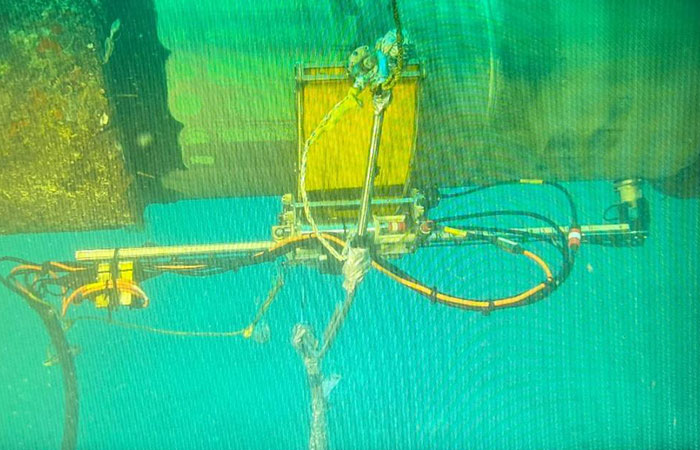
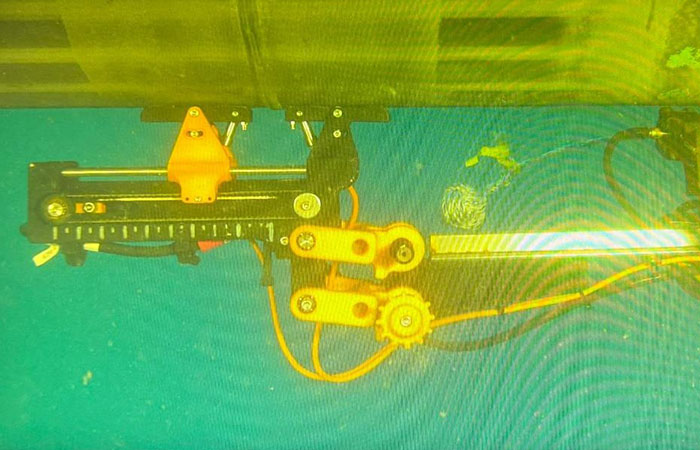
Phase 3: Time-of-Flight Diffraction (TOFD): For weld inspection, a dedicated add-on attaches to the vCompact’s retractable arm. This enables operators to adjust the probe-centre separation (PCS) remotely from the control room, without resurfacing. As optimal PCS varies with wall thickness, incorrect settings can degrade sizing accuracy. When a flaw is detected, the robotic arm fine-tunes the PCS on the fly to adjust the ultrasonic focal point, ensuring accurate defect positioning and sizing.
Key Performance Metrics
- Probability of Detection, > 95 % for defects ≥ 1 mm
- Sizing Accuracy, SPA ± 0.5 mm, ToFD ± 0.5 mm
Phase 4: Data Analysis and Reporting
The findings from the SPA and ToFD inspections were analysed in real-time, providing the client with immediate feedback on inspection progress. This was followed by a comprehensive report outlining the pipeline’s condition.
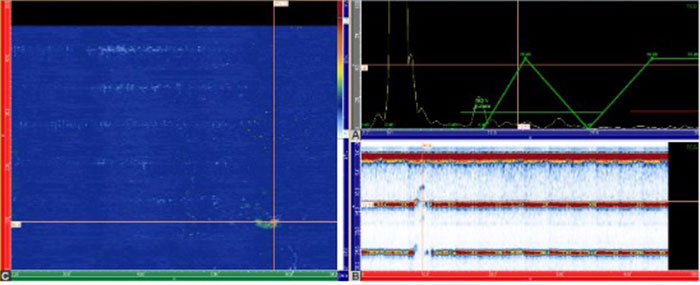
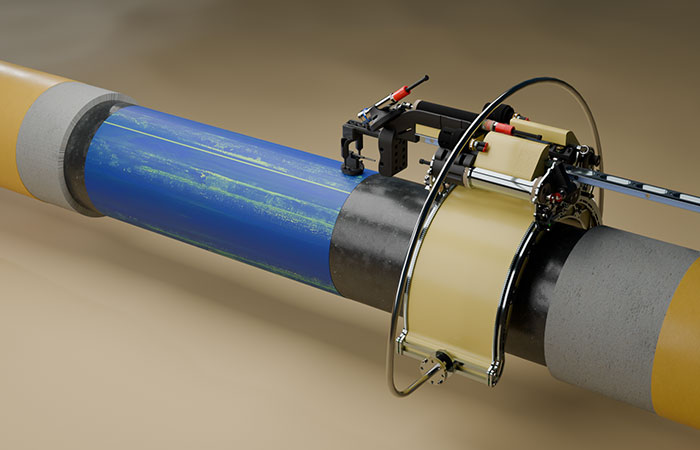
The combined SPA and ToFD campaign delivered:
1. High Confidence: Detection probability above 95 % for flaws ≥ 1 mm.
2. Efficiency: Along with the highest quality data, robotically controlled inspections are nearly 30% faster and safer than diver-based surveys and aren’t limited by the maximum allowable time divers can spend underwater, as well as decompression time.
3. Actionable Insights: The client received a comprehensive integrity report that detailed the location of each defect, along with detailed sizing and remaining wall thickness measurements.
The integration of Subsea Phased Array and ToFD data allowed the client to forecast the progression of defects and recommend proactive maintenance strategies.
Conclusion
By leveraging the ROV-deployed vCompact™ scanner with SPA and ToFD techniques, TSC Subsea delivered a comprehensive, high-accuracy assessment of its subsea pipelines and flowlines.
This fully robotic approach minimises operational risk, eliminates the need for divers, cuts inspection time and reduces the need for vessel support, thereby lowering personnel on board and fuel consumption. With reliable, data-driven maintenance strategies, the client can now plan interventions more efficiently, extend asset life and protect the marine environment.
TSC Subsea’s market-leading, multi-technology, ROV-deployed approach to pipeline inspection embodies the principles of innovation and efficiency, setting a benchmark for the offshore oil and gas industry. The case study emphasises the importance of adopting advanced technologies to ensure the safety and functionality of critical infrastructure while promoting more sustainable operations.
